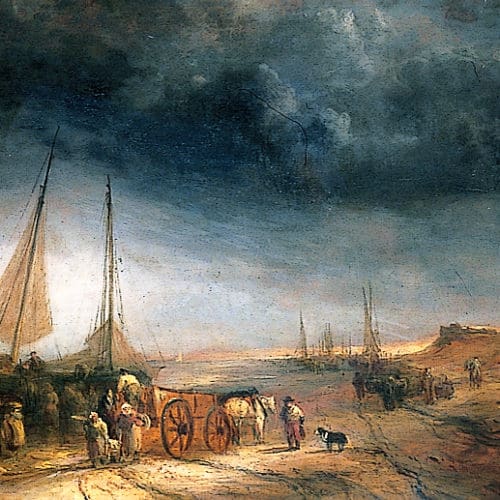Maritime activity 4: Folkestone smugglers
The children investigate paintings and prints of Folkestone smugglers and develop a piece of creative writing inspired by them.
Then they explore how smugglers hid contraband and invent their own ingenious method of hiding brandy, lace or tobacco from the Revenue.
Learning objectives
Increased knowledge and understanding of the history of smuggling.
Curriculum links
KS1-2 History (Local History Study).
KS1-2 English (creative writing)
Use Learn with Objects Maritime 5: smugglers to investigate:
- the oil painting of a gang unloading barrels on a remote beach; and
- the colour print by J M W Turner of free traders hauling tubs up the cliff between Folkestone and Sandgate.
Discuss what smuggling is and ask the class to do some research on 18th and early 19th century smuggling in Kent and Sussex.
Armed with their new found knowledge, the children imagine they are a smuggler in one of the pictures highlighted above, and write a dramatic account of their involvement.
It might include the danger, the excitement, the reasons they do it, their feelings, where they get the smuggled goods, how they hide the contraband, and of course any dramatic incidents that take place.
Alternatively, they could write from the point of view of one of the coastguard revenue men, attempting to apprehend them.
Some of the Coastguard families lived in the Pelter Brig, an old Royal Navy ship beached in Folkestone Warren in the early 1800s to deter smugglers from operating in this area. See Learn with Objects Maritime 9: Pelter Brig.
Look at the way tobacco has been cunningly hidden in the rope twist at the end of Learn with Objects Maritime 5: smuggling.
Investigate other ways smugglers hid contraband.
Children invent their own ingenious method of hiding brandy, lace or tobacco, either on the person, or when moving larger quantities around.
This can be done as a drawing, or in 3D using craft materials.

